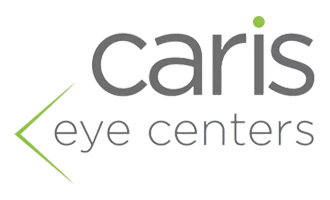
Are you concerned about your little one’s vision? Good vision plays a critical role in a child's development, impacting their learning, social interactions, and overall quality of life. Unfortunately, children may not always be equipped to communicate vision problems effectively. As a parent, being aware of the signs that indicate your child might need an eye exam is essential. As we approach the back-to-school season, it becomes even more important to look out for any potential vision problems. Let’s explore the key indicators that suggest it’s time to schedule a comprehensive eye exam for your child.
Is Your Child Due for an Eye Exam? Watch Out for these Warning Signs
1. Frequent Squinting or Blinking
If your child frequently squints or blinks excessively, it may indicate that they are struggling to see clearly. Squinting is a natural response when we try to improve focus and clarity. Excessive blinking can also be a sign of eye strain or discomfort.
2. Sitting Too Close to Screens or Holding Books Close
Children who consistently sit very close to the television or hold books and devices too close to their faces may be experiencing nearsightedness. This behavior suggests they need to get closer to see clearly, which can strain their eyes over time.
3. Complaints of Headaches or Eye Pain
Persistent headaches, especially after reading or using screens, can indicate a vision problem. Eye strain from focusing too hard can lead to headaches or discomfort around the eyes.
4. Covering One Eye or Tilting the Head
Children may cover one eye or tilt their heads to compensate for vision problems, particularly if one eye has better vision than the other. This kind of behavior can indicate strabismus or amblyopia, where the child is trying to improve their vision by adjusting their head position.
5. Difficulty with Reading or Close-Up Work
If your child struggles with reading, often losing their place or skipping lines, they might have a vision issue that affects their ability to focus on close objects. Convergence insufficiency is a common problem that can cause difficulty with close-up tasks.
6. Frequent Eye Rubbing
While occasional eye rubbing is normal, frequent rubbing can indicate that your child’s eyes are uncomfortable, dry, or strained. This could be a sign of vision problems like dry eye or allergies affecting the eyes.
7. Avoiding Activities That Require Good Vision
Children who avoid activities like reading, drawing, or playing games that require focus and good vision might be doing so because they are struggling to see clearly. Avoidance of such activities can be a subtle indicator of vision problems.
8. Complaints of Double Vision
If your child complains of seeing double, it’s a clear sign that something is not right with their vision. Double vision can be associated with eye alignment issues or other underlying vision problems that need to be addressed by an eye care professional.
9. Excessive Tearing or Eye Discharge
Excessive tearing or discharge from the eyes can be a sign of eye infections or blocked tear ducts. Persistent tearing, especially if accompanied by redness or discomfort, should be evaluated by an eye care professional.
10. Sensitivity to Light
Increased sensitivity to light, also known as photophobia, can indicate various eye conditions, including inflammation or infections. If your child frequently complains about bright lights or often squints in bright environments, it may be a sign that they need an eye exam.
Why Regular Eye Exams Are Important
If your child shows any of the signs above, it may be time to schedule an eye exam. Regular eye exams are crucial in identifying vision problems early, which can prevent long-term issues and help maintain optimal eye health. Vision problems often affect children's academic performance and social development, making it essential to detect and address these issues as early as possible.
Common Vision Problems in Children
A comprehensive eye exam can be helpful in identifying a range of visual issues, including:
- Refractive Errors: These include nearsightedness (myopia), farsightedness (hyperopia), and astigmatism, which affect how light is focused on the retina.
- Strabismus: This is a condition where the eyes are misaligned, often referred to as cross-eyed or wall-eyed.
- Amblyopia: Also known as lazy eye, this condition occurs when one eye is weaker than the other, leading to vision problems.
- Convergence Insufficiency: This affects the ability to focus on close objects, often causing difficulty with reading and other close-up tasks.
Request a Pediatric Eye Exam Appointment Today
Recognizing the signs that your child may need an eye exam is crucial for their overall development and well-being. By staying vigilant and seeking professional help when needed, you can help ensure that your child’s vision is healthy and that they have the best possible start in life.
For more information or to schedule a comprehensive eye exam for your child, visit . Our experienced team is dedicated to providing the highest quality eye care for your entire family, including the very latest additions!
